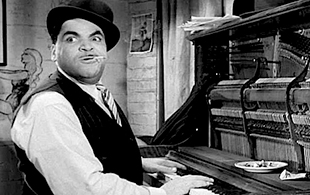![]()
Two days ago, Sony Music, Universal Music and Warner Music formally agreed to submit music videos to the British Board of Film Classification (BBFC) before posting them on YouTube and Vevo.
While presently only applicable to videos that are produced in the UK, the move sends a strong signal regarding the content of some of our music and the fears that surround the internet.
Greeted by Ben Howard as ‘pointless’ and by Jessie J as ‘a wonderful idea’, the move follows years of growing concern over adult content in music videos. Annie Lennox told the BBC that she found the imagery of certain videos ‘dark’ and ‘pornographic’ in 2013, when the certification was first trialled. ‘I’m all for freedom of expression, but this is clearly one step beyond and it’s clearly into the realm of porn,’ she said. This issue is further highlighted at a time when young schoolchildren are experiencing higher rates of anxiety and depression than ever, partly due to escalating sexualisation through media imagery and peer pressure through social media. So it would make sense to be able to screen the more overtly sexual, violent or misogynistic music videos that are now being produced.
So far, the BBFC has granted certification to 132 videos, with 56 rated ‘12’ and 53 rated ‘15’. One has received ‘18’ certification – Dizzee Rascal’s tongue-in-cheek horror killing fest, ‘Couple of Stacks’. Will these tags achieve their goal of protecting younger and more sensitive fans from the corrupting or offensive content? Or will they simply advertise it to the adventurous and rebellious?
 The Parental Advisory Label Program (PAL) warning was introduced by the Recording Industry Association of America (RIAA) in 1985 to warn of potentially ‘unsuitable’ music releases. A voluntary system, it was adopted by the British Phonographic Industry (BPI) as the Parental Advisory Scheme in 2011. While the scheme itself has frequently been criticised, its logo found unplanned popularity through its use on clothing and merchandise – making adults complicit in promoting the appeal of the forbidden.
The Parental Advisory Label Program (PAL) warning was introduced by the Recording Industry Association of America (RIAA) in 1985 to warn of potentially ‘unsuitable’ music releases. A voluntary system, it was adopted by the British Phonographic Industry (BPI) as the Parental Advisory Scheme in 2011. While the scheme itself has frequently been criticised, its logo found unplanned popularity through its use on clothing and merchandise – making adults complicit in promoting the appeal of the forbidden.
There is plenty of evidence of the limitations of certification and censorship in music. A cover of ‘My Ding-a-Ling’ by Chuck Berry attracted the attention of social activist Mary Whitehouse in 1972, promoting it in the process. In 1984, DJ Mike Read was yet more successful when he declared Frankie Goes to Hollywood’s ‘Relax’ ‘overtly obscene’, and refused to play it on his mid-morning Radio 1 show. Sales soared and it went to No1.
The list of songs banned by the BBC is a revealing social document in its own right, as is its Gulf War Blacklist of banned songs. The BBC banned the Goons’ ‘Russian Love Song’ and Serge Gainsbourg’s ‘Je t’aime… moi non plus’. It banned Heaven 17’s ‘Fascist Groove Thang’ and the Pistols’ ‘God Save the Queen’. It banned the Kinks’ ‘Lola’ and the Stranglers’ ‘Peaches’. It banned Cab Calloway’s ‘Minnie the Moocher’ and D Mob’s ‘We Call It Acieeed’ and the Shamen’s ‘Ebeneezer Goode’. It often banned stuff without understanding what it was about.
The BBC also banned a catalogue of older songs, very many of them jazz. Artists such as Fats Waller (‘Reefer Song’), Ella Fitzgerald (serial offender), Billie Holliday (‘God Bless the Child’), Glenn Miller (‘The Story of a Starry Night’), Tommy Dorsey (‘Song of India’) all fell foul of the censor. Both the artists and the music genre itself have since become regarded as a major chapter in music and social history. Was the BBC wrong? In its defence, assessing lyrical content is always going to be more difficult than video. Where video is, by definition, graphic, lyrics are readily ambiguous. Even where a lyric appears offensive, can you be certain that it is intentionally so? Conversely, lyrical intent is readily obfuscated by the use of new language.
In its defence, assessing lyrical content is always going to be more difficult than video. Where video is, by definition, graphic, lyrics are readily ambiguous. Even where a lyric appears offensive, can you be certain that it is intentionally so? Conversely, lyrical intent is readily obfuscated by the use of new language.
Believed to be derived from a variant of the slang words jism or gism, the Historical Dictionary of American Slang dates the term jazz to 1842 and defines it as ‘spirit; energy; spunk’ – the ambiguity of both spunk and jism is inescapable. The association of jazz music with sex and drugs was a template for rock and roll, which itself is a euphemism for sexual intercourse. Maybe the Corporation’s sensibilities were keener a few generations ago, but its ability to understand the role of art in general and music in particular was Victorian. Not that the Victorians’ popular music was above innuendo…
Critics have pointed out that videos made outside the UK will escape the BBFC’s scrutiny – although the intention is to include all music videos: ‘The long-term aim is to warn consumers about the content they view online, and to give parents a degree of control over what their children are exposed to, by enabling filters to be set on home computers and mobile devices,’ assures BBFC Assistant Director, David Austin.
 ‘We want to empower consumers by giving them useful, advance guidance as to the suitability of the music videos they watch, while leaving artists the freedom to fully express themselves,’ said BPI Chief Executive, Geoff Taylor when the scheme was first proposed. ‘The introduction of age ratings on top of the existing parental advisory warnings is a key next step by the UK’s record labels, working with BBFC, Vevo and YouTube, that will enable families to make more informed viewing decisions.’
‘We want to empower consumers by giving them useful, advance guidance as to the suitability of the music videos they watch, while leaving artists the freedom to fully express themselves,’ said BPI Chief Executive, Geoff Taylor when the scheme was first proposed. ‘The introduction of age ratings on top of the existing parental advisory warnings is a key next step by the UK’s record labels, working with BBFC, Vevo and YouTube, that will enable families to make more informed viewing decisions.’
Austin also said, ‘We will take into account that because a music video is short and self-contained, material is less likely to be justified by context and more likely to cause offence than in, say, a 90-minute feature film.’ He has a point.
It’s much easier to criticise the efforts of the BBFC, RIAA, BPI and others than it is to offer constructive alternatives. This doesn’t mean to say that the current portrayal of violence, sex, drugs and race in music isn’t concerning. But most problems are best addressed when properly understood, and that hardly seems to be the case here.
Will the BBFC classification succeed? Possibly to a similar extent as the Parental Advisory initiative – it will make it simpler to vet childrens’ viewing, without having to monitor all content. Certainly, when young children come home from school wanting to watch music on YouTube, busy parents should now be able to set limits more easily, so that their seven-year-olds can be better protected from sex and violence. But the new classifications will have to operate with the added handicap of internet delivery not having a physical format, and in the knowledge that most kids know more about the workings of the internet than their seniors.
See also:
Vinyl: The New Groove (UK album charts)






